Hosting a summer barbecue? Don’t be afraid to include fish – it’s quick and tasty and your guests will be grateful, just make sure it’s sustainable.
Barbecues deliver memorable meals at the best of times. But after months of virtual socialising and with the sun shining, a reunion barbecue for close friends and family will be one to remember – especially if you add some quality fish. In fact, open flame cooking is not only the most exciting way to cook, it's the only method that’s going to give your fish a crispy charred coat, smoky flavour and restaurant-cred grill stripes. Unlike meat, not all fish are equal when it comes to the grill. Firm, robust fish stand up best to barbecuing. Sardines, salmon and tuna are all good candidates. More delicate types of fish such as hake can easily flake and fall through the grill, although with a little prep and care when cooking, most fish can be barbecued.
In part one we’ll take you through the common pitfalls, like how to prevent fish from sticking and overcooking, and give you plenty of tasty cooking tips. We’ll also steer you towards the best sustainable fish to use in the UK so you can barbecue with family and friends knowing that you’re not depleting the ocean’s fish stocks. In part two we’ll focus on some of the UK’s amazing sustainable shellfish.
Sardines
These small silver fish with blue-green backs quite literally turn to gold on the barbecue. They are hardy, rich in oils and easy to cook – just rub with olive oil, salt and pepper before laying them on a searing grill.
Cook them descaled and gutted. You can tell they are cooked – usually after 3 to 4 minutes – when their flesh is firm and easily flakes away from the bone and the skin is golden and crispy. The small bones are edible, but the backbone is easily removed and can be discarded after eating the top-side flesh.
Take a lead from the Portuguese and toss them in paprika, chilli, lemon juice, garlic, rosemary and olive oil for a sweet peppery, rustic flavour or stuff them with pine nuts, raisins and breadcrumbs for a caramelised finish, Sicilian style. Serve with crusty bread to soak up the intense flavours and juices, roasted baby potatoes and a fresh green leaf and fennel salad.
Despite the sardine’s rich association with Portugal, there are currently no MSC certified fisheries there. There are, however, MSC certified fisheries catching sardines in Cornwall, South Australia and the Gulf of California.
The Cornish sardine fishery has been MSC certified since 2010. Boats sail mainly from Newlyn and Mevagissey and stay within six miles of the coast of Cornwall. Operating from small boats, fishers use traditional ring nets and drift nets to catch sardines from July to April. The sardines they catch are significantly larger than the minimum size allowed and are popular with restaurants and retailers. The fishery has been recognised by MSC for its fresh approach to data collection and scientific innovation, which has helped ensure the sustainability of the Cornish sardine stock.
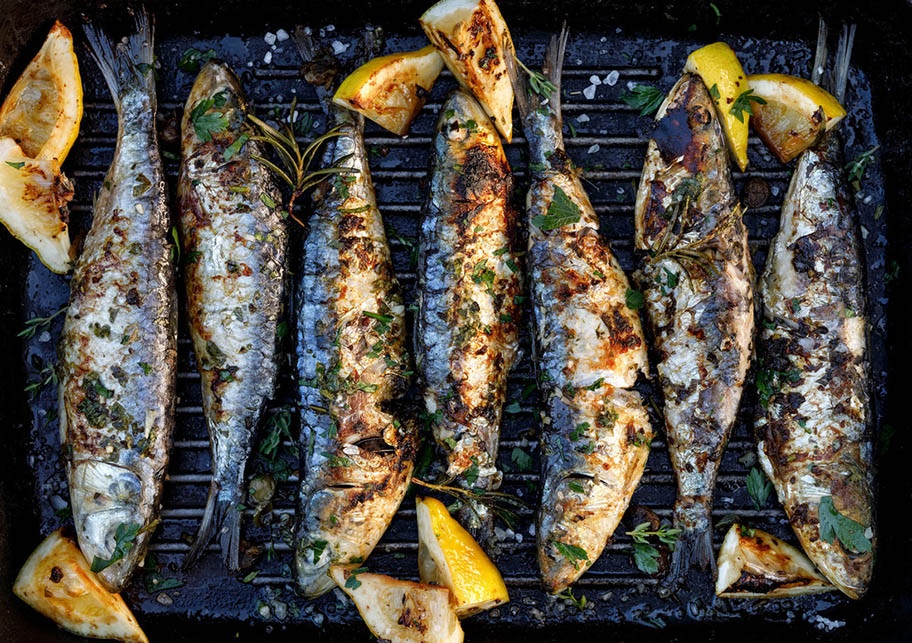
© iStock / zi3000
Cornish Hake
MSC certified hake is another fine Cornish fish for a barbecue. This deepwater fish is a member of the cod family and has a milder taste, softer texture and smaller flake than cod. So it needs a bit of care on the flame to stay in one piece. It’s best cooked whole, stuffed with citrus fruits and aromatic herbs, or as fillets wrapped in blanched leek leaves or a foil parcel (en papillote) – this last method keeps all the juice and flavours in. Try barbecued hake parcels with a spicy coconut sauce or grilled with a fruity apricot glaze. The Spanish are big fans of hake and serve it with chorizo, paprika and garlic.
The Cornish hake fishery was the first hake fishery in the UK to gain MSC certification, which it has held since 2015. One of the fishery’s key strengths is the use of nets with larger mesh size than the legal requirement. These nets only target the larger hake and allow the smaller juveniles to swim free, leaving more fish to reproduce.
Cornish fishermen work from a fleet of 13 boats catching hake in the Celtic Sea to the west of the UK mainland and south of Ireland. Together they land just under 1,800 tonnes of European hake (Merluccius merluccius) per year which is sold on to a range of buyers, from Michelin starred restaurants and fish and chip shops to contract caterers for schools.
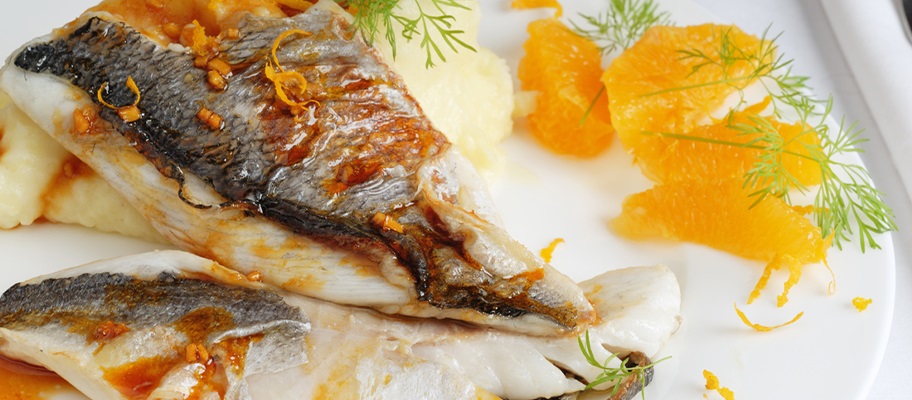
Kippers
Now the humble kipper (a split, gutted and smoked herring) might not be your first choice when you think of the barbecue, but it is a great way to start, or end, a day’s camping by the coast. Seasoned cook, Delia Smith, swears by the ‘strong, gutsy flavour’ of local-smoked kippers brushed with oil and cooked over charcoal.
Given their robust savoury flavour, kippers only require a light touch on the barbecue – just a knob of butter and a couple of minutes on each side on a medium-hot grill until they start to bubble and curl up. Then scrape off the skin and serve with a buttered roll, poached egg and watercress. Any house-proud friend will thank you for cooking them outside to avoid a lingering smell of smoked fish in the kitchen.
The North Sea herring stock extends from the Norwegian coast into the North Sea and through to the eastern Channel. Vessels use the midwater trawl method which means the seabed is not damaged, and species like cod, haddock and whiting remain undisturbed. The technology on the boats plays an important role in ensuring sustainable practices are followed. Sonar, net and catch monitors all improve species targeting (sonar, for example, can distinguish between mackerel and herring), and bycatch is only around two per cent.
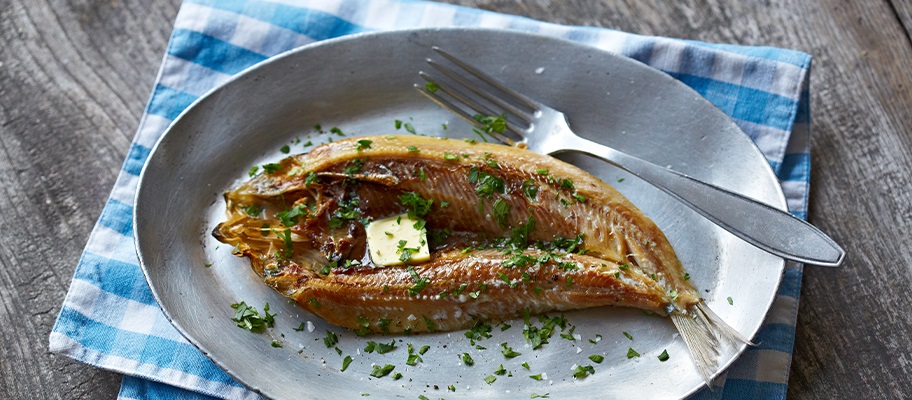
© MSC / Clive Streeter
Salmon
With its deep copper colour and firm texture, salmon looks great and tastes even better on the barbecue. If you can source wild chinook, coho or sockeye salmon, then these varieties contain the most oil and are least likely to dry out when cooked over charcoal.Try charred salmon with a brown sugar and mustard glaze, a tangy hoisin sauce, or steal the show by grilling a whole salmon slashed and stuffed with aromatic garden herbs and lemon zest; two tinfoil covered bits of cardboard will help you to flip the salmon and keep it whole. Grill average-sized salmon steaks for 3 minutes skin-side down for grill marks and then gently flip it over for another 3 to 4 minutes until the skin is crispy and the flesh opaque.
Much of the wild salmon available in the UK comes from the Alaska salmon fishery, which was the first US fishery to achieve MSC certification in 2000. Alaska ranks as one of the world’s healthiest and best-managed fisheries whose limited harvests don’t endanger the long-term health of fish stocks. A very high percentage of Alaska salmon fisheries are MSC certified, as are a number of Russian fisheries.
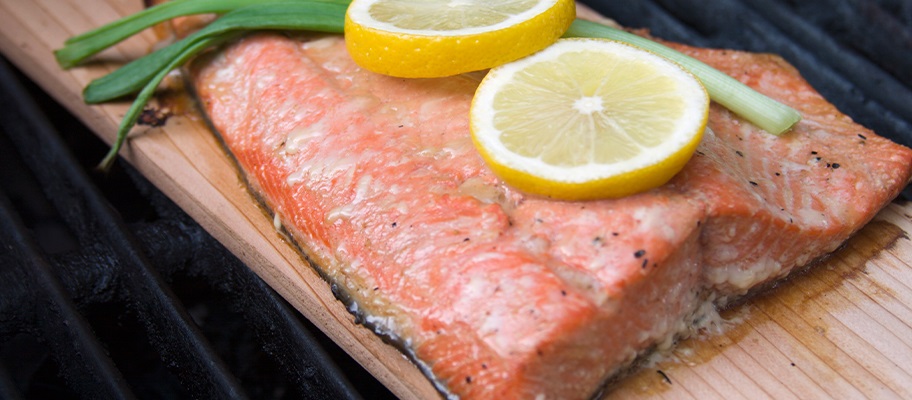
© iStock / Strevell
Tuna
Although it’s widely available, there’s still something exotic about a flame-grilled tuna steak, grate stamped on top and ruby red inside. Yellowfin, bigeye and albacore are all good candidates for the hot coals. Their firm flesh works well grilled, or seared rare to medium-rare.
The key to cooking tuna is to keep it snappy – overcook it and it will be dry and chewy. One minute on each side and one minute’s rest should do it. Tuna’s delicate flavour also makes it an ideal candidate to be marinated – try soy and sesame-crusted tuna steaks with a ginger dressing, grilled spicy mango and bigeye skewers, or rapidly sear it and serve with a smokey corn, lime, coriander and red onion salsa.
Whether you’re choosing fresh or frozen, buying sustainable tuna can be a tricky business. The best way to significantly reduce exposure to risks such as overfishing, the problem of bycatch, mislabelling and illegal, unreported and unregulated fishing is to choose the distinctive blue label of MSC certified tuna.
Try the below recipe from tv chef, Bart Van Olphen, for grilled/barbecued tuna with Balinese sambal
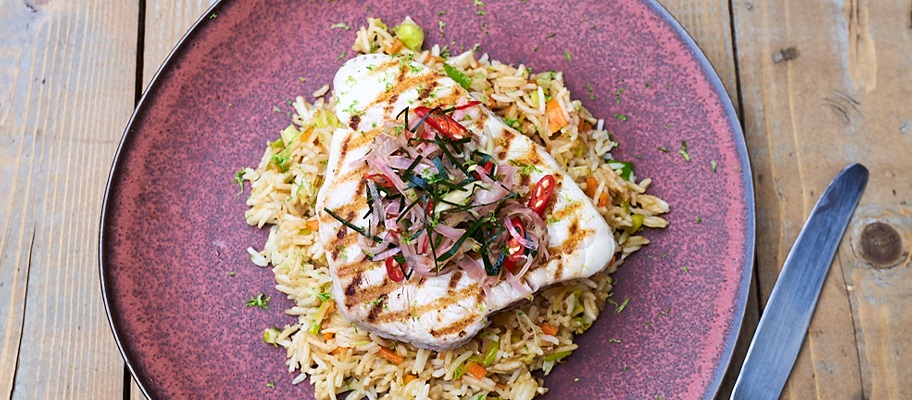
© David Loftus - Grilled/barbecued tuna with Balinese sambal
How to prepare fish for the barbecue
- Let your fish come to room temperature for 15 minutes. This will help it to cook more evenly.
- Leave the skin on. This will help to prevent the fish from getting overcooked.
- Rub both sides of the fish with olive oil and sprinkle with salt and pepper. This will help to stop it sticking to the grill. A coat of mayonnaise works just as well.
- Clean the grill rack before cooking and lightly oil it using some vegetable or olive oil on a paper towel.
How to cook fish on the barbecue
Cook on a medium-high heat – when the flame has died down and the charcoal is covered with white ash. The thinner the fillets or steaks you have, the higher the heat should be. Allow time for a good crust to develop on the first side of the fish – this helps to release it from the cooking grate.
Avoid flipping the fish more than once. This reduces the chance of it sticking to the grill and disintegrating. If you’re worried about sticking, try cooking fish on a bed of sliced lemons. If you grill with the lid closed then the second side will begin to cook too and you may not need to flip it.
Fish is best when it’s just barely cooked through so it’s flaky, moist and silky to bite.
Nick Wyke is a journalist and food writer who is passionate about local, seasonal and sustainable produce.
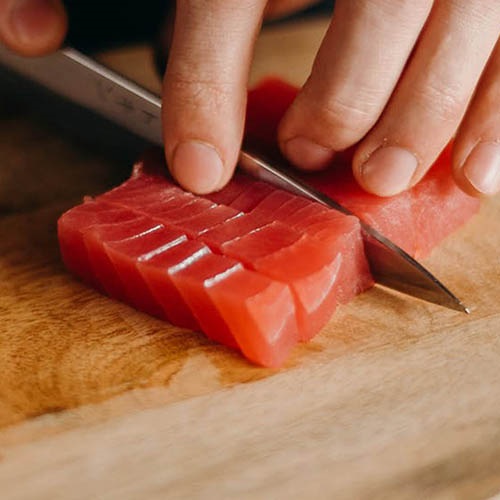
A foodie's guide to tuna
How a staple can be a gourmet dish

A foodie's guide to salmon
A comprehensive guide to the world's most popular fish
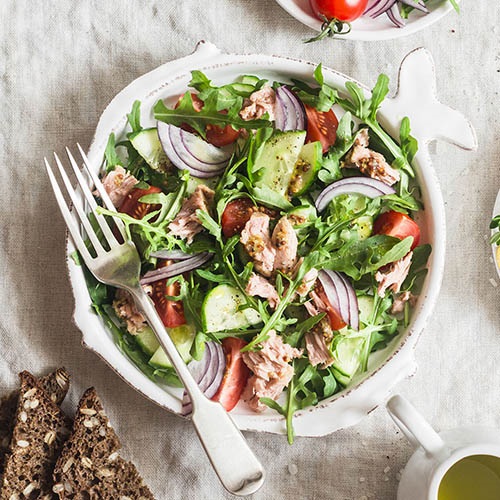
Five ways to help oceans
Play your part for ocean health from your kitchen

